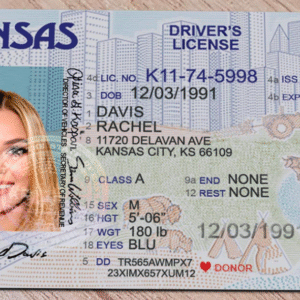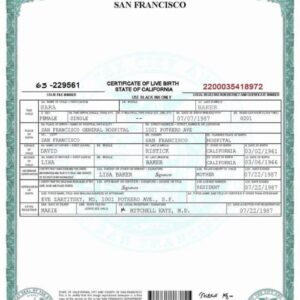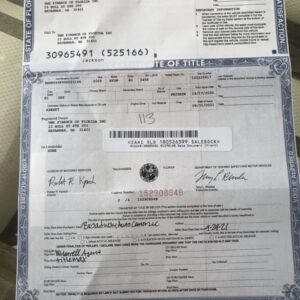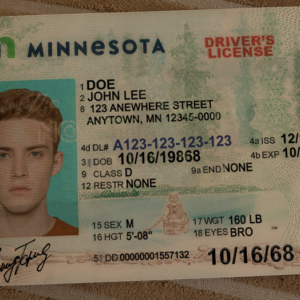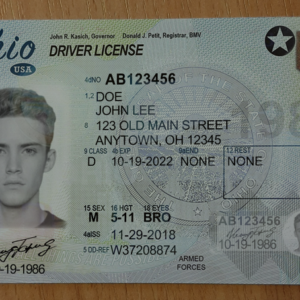The allure of a cheap fake ID can be tempting. Whether it’s for nightlife adventures, age-restricted purchases, or simply for the thrill of having one, many find themselves drawn into the hidden world of counterfeit identification. But before you jump on that bandwagon, it’s important to understand what you’re getting into. The reality is far more complex than just having a fun night out. From financial risks to legal repercussions, buying a cheap fake ID comes with its own set of significant challenges and concerns. Let’s dive deeper into this underbelly of deception and explore both the advantages and disadvantages associated with these illicit documents.
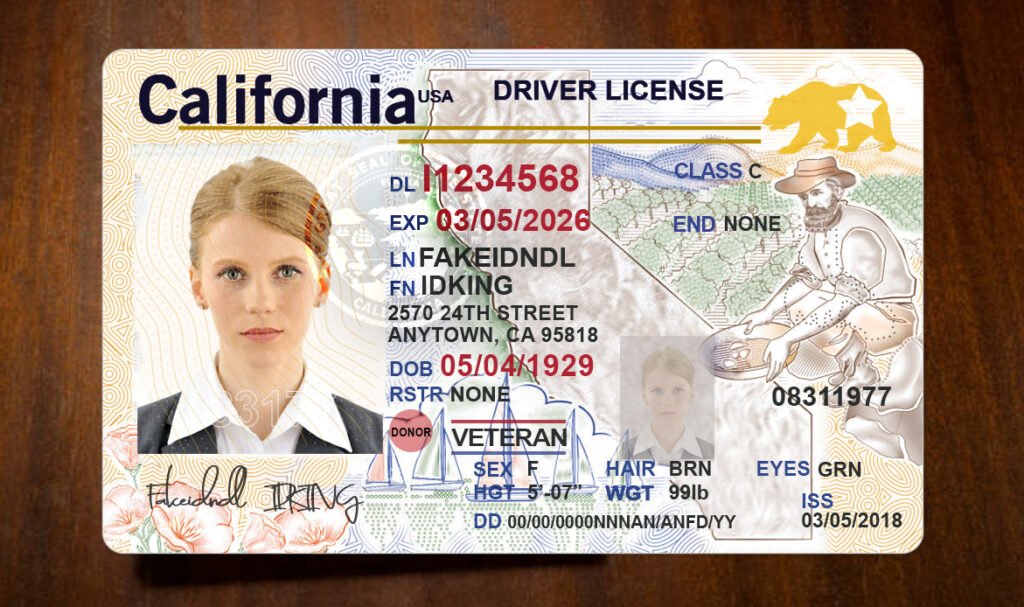
Advantages and disadvantages of buying cheap fake ID or buying fake driver license
Purchasing a cheap fake ID can offer the thrill of access to places and experiences that are otherwise off-limits. For some, it’s about freedom—enjoying a night out with friends or buying alcohol without age restrictions. The allure lies in the instant gratification and the chance to step into adult worlds.
However, these advantages come at a cost. Legal consequences loom large if caught, and financial loss is another possibility if you end up with a poor-quality product. Beyond legalities, there’s also the risk of being scammed by unscrupulous sellers who capitalize on desperate buyers seeking validation through false identities.
Introducing the Hidden World of Fake IDs
The world of fake IDs is more expansive than most realize. These counterfeit documents enable users to bypass age restrictions, gain access to restricted areas, and even secure services meant for adults only. While the allure may seem tempting, it’s essential to understand the risks involved.
Behind this hidden world lies a complex network of suppliers and buyers operating in shadows. The technology used has advanced significantly, making these fakes increasingly difficult to detect. Yet, with every advantage comes a range of repercussions that can affect both individuals and businesses alike.
A financial hit
Buying cheap fake ID might seem like an easy way to save money, but it often leads to unexpected financial consequences. Many purchasers underestimate the risks involved and end up facing hefty fines or legal fees if caught using counterfeit identification.
Additionally, once your identity is compromised due to fraudulent activities, restoring it can be costly and time-consuming. The short-term savings of obtaining a fake ID can quickly spiral into long-term financial headaches that far outweigh any initial benefit.
Reputation risk
Using a cheap fake ID can lead to significant reputation risks. If caught, individuals may face severe consequences, including legal trouble and damage to their personal brand. Trust is hard to rebuild once it’s lost.
For businesses, the implications are equally serious. Accepting IDs that turn out to be fraudulent can tarnish a company’s image and erode customer trust. Maintaining integrity in operations is crucial for long-term success, making the decision to use or accept fake IDs potentially harmful for everyone involved.
Operational challenges
Buying a cheap fake ID can seem like an easy solution, but it often comes with significant operational challenges. Many businesses struggle to navigate the consequences of accepting fraudulent identification. This can lead to compliance issues, fines, and loss of trust from customers.
Additionally, staff training becomes essential yet complicated. Employees need to be equipped with the skills to identify fakes while ensuring they don’t inadvertently refuse legitimate customers. Balancing these demands can create a chaotic environment that impacts overall service quality and efficiency.
The corrosive problem of fake IDs for Q-commerce
Fake IDs pose a significant threat to the rapidly growing Q-commerce sector. With on-demand services expanding, verifying customer identities has become crucial for businesses. The presence of counterfeit identification can lead to unauthorized purchases and loss of revenue.
Moreover, these fraudulent activities tarnish the reputation of legitimate companies. Trust is essential in Q-commerce; once customers feel unsafe or deceived, they are unlikely to return. As fake IDs continue to circulate, businesses must prioritize stringent identity verification measures to protect themselves and their clientele from this escalating problem.
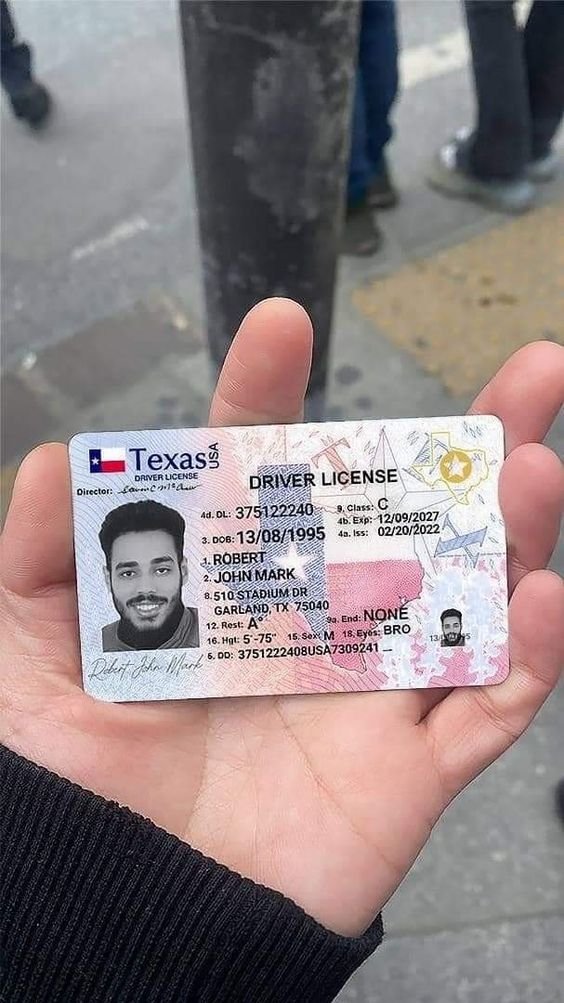
How easy is it to get a fake ID?
Acquiring a cheap fake ID might seem like a straightforward task, especially with the rise of online vendors. Many websites promise high-quality replicas that mimic real identification documents closely. A quick search can yield numerous options, making it tempting for those looking to bypass age restrictions or other legal barriers.
However, navigating this world comes with risks. The legality varies by location, and many sellers operate in shady realms online. Consumers must be cautious about scams and counterfeit products that could lead to severe consequences if caught using them.
The multi-faceted impact on Q-commerce and last-mile businesses
The rise of cheap fake IDs introduces significant challenges for Q-commerce and last-mile businesses. Fraudulent identities can lead to financial losses as companies face chargebacks, fines, and damaged reputations. Delivery drivers unknowingly verifying these IDs may inadvertently become complicit in illegal activities.
Moreover, operational efficiency is compromised when businesses have to allocate resources toward investigating identity fraud. This distraction impacts customer service and can create delays in delivery times. As the demand for quick transactions grows, maintaining trust becomes paramount while navigating this hidden world of deception.
The solution: Innovations in ID verification
The rise of fake IDs has pushed businesses to rethink their identity verification processes. Innovations in technology now offer smarter solutions that can detect counterfeit documents effectively. These advancements include biometric checks, facial recognition, and advanced algorithms that analyze document authenticity.
By leveraging these cutting-edge tools, companies can enhance their security measures while providing a seamless customer experience. This proactive approach not only helps prevent fraud but also builds trust with customers who value safety and reliability in transactions. Embracing innovative ID verification is key to combating the growing issue of cheap fake IDs.
Are You Ready For AI-Generated Fake IDs?
The rise of artificial intelligence is transforming many industries, and the world of fake IDs is no exception. AI-generated fake IDs are becoming increasingly sophisticated, making them harder to detect. These fakes can mimic real documents closely, raising concerns for businesses that rely on identity verification.
As technology evolves, so do the methods used by fraudsters. It’s essential to stay informed about these developments in order to protect your organization from potential risks associated with accepting fraudulent identification. Adapting your security measures becomes crucial in this ever-changing landscape.
Use a provider with robust mobile SDK capabilities; don’t allow the uploading of media files
Choosing a provider with robust mobile SDK capabilities is crucial for ensuring secure identity verification. A strong SDK can seamlessly integrate advanced features, making the process user-friendly while also fortifying security measures against potential fraud.
Avoid allowing the uploading of media files during ID verification processes. This practice poses significant risks as it opens avenues for users to submit altered images or fakes. By restricting uploads, businesses can enhance their defenses and minimize exposure to fraudulent activities, safeguarding both their reputation and customer trust.
Layer multiple identity verification checks
Implementing multiple layers of identity verification is crucial in today’s digital landscape. By combining various methods—such as biometric scans, knowledge-based questions, and document verification—you can significantly enhance security measures.
Each layer adds an extra hurdle for potential fraudsters, making it harder to bypass defenses. This multi-faceted approach not only protects businesses but also builds customer trust by ensuring that identity checks are thorough and reliable. Embracing this strategy means staying one step ahead of those who attempt to exploit vulnerabilities in the system.
Find a provider who actually trains their fraud detection on… fraud samples
When searching for a reliable ID verification provider, prioritize those that use real fraud samples in their training. This approach ensures that the detection algorithms are tailored to recognize sophisticated counterfeit techniques effectively.
By employing actual fraudulent IDs during training, these providers can stay ahead of emerging threats. It also means their systems continuously improve, adapting to new tactics used by fraudsters. Choosing such a provider significantly enhances your ability to combat fake IDs and protect your business from potential risks associated with identity theft.
Professionalized fraud needs professional solutions
Fraud is evolving rapidly, becoming increasingly sophisticated and harder to detect. As counterfeiters use advanced technology like AI, traditional methods of detection fall short. Businesses must adapt by embracing professional solutions tailored to combat these new tactics effectively.
Investing in specialized fraud prevention tools can help businesses stay ahead of the curve. These solutions offer robust verification processes that not only identify fake IDs but also protect against emerging threats. With a proactive approach, companies can minimize risks while maintaining trust with their customers.
Discover Entrust Identity Verification
Entrust Identity Verification offers cutting-edge solutions tailored for businesses navigating the complexities of identity verification. Their robust platform utilizes advanced technology to ensure that every transaction remains secure and efficient, minimizing risks associated with cheap fake IDs.
With a focus on multi-layered verification methods, Entrust goes beyond traditional checks. This approach not only strengthens security but also enhances customer trust by providing a seamless experience. In an age where digital fraud is rampant, leveraging such innovative solutions can be vital for safeguarding your business and reputation.
CHEAP FAKES ARE NOW DEEP FAKES
The world of fake IDs has evolved dramatically. What once involved basic forgery now includes advanced technologies like deep fakes. Cheap fakes are no longer just poorly crafted reproductions; they’re sophisticated imitations that can deceive even the most vigilant eyes.
With artificial intelligence at play, creating realistic images and videos is easier than ever. This raises concerns about security and authenticity across many sectors, especially where age verification and identity checks are crucial. As deep fakes become more prevalent, distinguishing between real and counterfeit becomes a daunting challenge for businesses and consumers alike.
Fake IDs
Fake IDs have become a widespread issue in today’s society. Many individuals, often young adults, seek them out for various reasons—whether to access restricted venues or evade age restrictions on purchases. The allure of these counterfeit documents is strong, with promises of instant freedom and independence.
However, the consequences can be severe. Using a fake ID not only poses legal risks but also jeopardizes personal safety and security. As technology advances, so do the methods used to create and detect them, making it crucial for individuals to understand this complex landscape fully.
Protecting Yourself
When it comes to navigating the world of fake IDs, your safety should be a top priority. Protecting yourself starts with understanding the risks involved. Engaging in illegal activities can lead to serious legal consequences and damage your reputation.
It’s also crucial to safeguard your identity from fraudsters who exploit these situations. Always verify identities before sharing personal information or making decisions based on someone’s ID. Stay informed about common scams and remain vigilant; awareness is your best defense against potential threats in this hidden realm.
If You Become a Victim
If you find yourself a victim of identity theft due to a cheap fake ID, act swiftly. Notify your bank and credit card companies immediately to safeguard your financial accounts. Keep records of all communications for reference.
Next, file a report with local authorities and the Federal Trade Commission (FTC). This step is crucial for protecting your identity in the long run. Regularly monitor your credit reports for any unusual activity, as this can help catch further issues before they escalate. Take proactive measures to restore your security.
How to Spot Fake IDs
Spotting fake IDs requires a keen eye for detail. Start by examining the document’s edges; genuine IDs typically have smooth, rounded edges, while fakes may show signs of rough cutting. Check for holograms or other security features specific to your state.
Next, inspect the photograph and text closely. Any blurriness, inconsistent fonts, or mismatched colors can indicate a counterfeit. Use a flashlight to reveal hidden elements that are often absent in fake versions. Trust your instincts; if something feels off, it’s worth further investigation before accepting the ID as valid.
Valid Identity Documents
Valid identity documents are essential for verifying an individual’s age, identity, and eligibility. Common examples include passports, driver’s licenses, and national ID cards. These documents typically feature security elements like holograms or watermarks to prevent forgery.
Using valid IDs helps businesses comply with regulations while ensuring safety in transactions. Whether it’s for purchasing alcohol or entering venues, having a legitimate form of identification is crucial. It protects both individuals and establishments from potential legal issues tied to underage access or identity fraud.
How to Spot Fake IDs: Signs of a Fake
When examining an ID, look closely at the edges. Genuine IDs typically have smooth, even edges, while fake ones may show rough or uneven cuts. Check for inconsistencies in font size and style; fakes often use mismatched typography.
Next, pay attention to the holograms and watermarks that genuine documents feature. These elements should be clear and difficult to replicate. If they appear blurry or non-existent, it’s a red flag. A good light source can also reveal hidden patterns that counterfeiters struggle to reproduce accurately.
Digital Detection of Fake IDs
Digital detection of fake IDs has revolutionized how businesses combat identity fraud. By using advanced algorithms and machine learning, companies can analyze various elements of an ID, from holograms to barcode data. This technology allows for near-instant verification, making it harder for counterfeiters to slip through the cracks.
Moreover, digital tools can flag anomalies that human eyes might miss. With each scan, these systems learn and enhance their effectiveness against evolving techniques used by fraudsters. The result is a more secure environment for both businesses and consumers alike in the fight against fake identities.
How to Spot Fake IDs FAQs
Spotting a fake ID can be tricky. First, always check the photo for inconsistencies. A blurry image or signs of tampering are red flags. Look closely at the card’s edges; they should be smooth and well-defined.
Next, examine the text and fonts used on the ID. Fake IDs often have misspellings or unusual font choices that don’t match real documents. If possible, use a UV light to check for any hidden features like holograms, which legitimate IDs typically possess but fakes may lack entirely.
Fake ID Red Flags
When examining an ID, look for inconsistencies that raise suspicion. Check for blurred text or images, which can indicate a poor-quality fake. The edges of authentic IDs are usually smooth and well-defined; any roughness could be a red flag.
Another warning sign is the absence of security features like holograms or watermarks. Genuine IDs have these elements embedded during production to prevent counterfeiting. If you notice unusual colors or fonts that differ from official samples, it’s wise to question the legitimacy of the document in hand.
How to Spot Fake IDs Using AI
Artificial intelligence is revolutionizing the way we detect fake IDs. By analyzing patterns and anomalies in ID documents, AI can identify inconsistencies that human eyes might miss. Advanced algorithms scan for variations in fonts, holograms, and other security features to determine authenticity.
Moreover, machine learning continuously improves detection methods by learning from past fraud cases. This adaptive technology helps businesses stay ahead of counterfeiters. As AI tools evolve, they provide a robust solution for safeguarding against the rising tide of cheap fake IDs infiltrating various sectors.
How do they make fake IDs?
Creating fake IDs involves a mix of technology and manual craftsmanship. Crooks often use high-quality printers, specialized software, and hologram stickers to mimic real identification documents. They carefully study the design elements of legitimate IDs to replicate them as closely as possible.
Some advanced counterfeiters utilize digital tools like AI for producing highly realistic images. With access to templates and scanners, they can create convincing fakes that slip through casual scrutiny. This combination of tech-savvy methods and traditional techniques makes it increasingly difficult for people to spot fraudulent identifications quickly.
Are fake IDs illegal?
Fake IDs are illegal in most jurisdictions. Possessing, creating, or distributing a fake identification document can lead to serious legal consequences, including fines and imprisonment. Law enforcement agencies take these offenses seriously as they undermine the integrity of official documents.
Even using a fake ID for seemingly harmless activities—like underage drinking or entering clubs—can result in criminal charges. The ramifications extend beyond immediate penalties; they can affect future employment opportunities and personal reputation. Understanding the risks is crucial before considering any involvement with counterfeit identifications.
Where to get a fake ID?
Finding a cheap fake ID can be surprisingly easy, thanks to the vast digital marketplace. Many websites claim to offer quality counterfeit IDs for various purposes. However, navigating this underground world requires caution and discernment.
Local sources may also exist, including friends or acquaintances who might have connections. Yet, engaging with such individuals carries its own risks and potential legal repercussions. Always consider the consequences before venturing into obtaining a fake ID; it’s not just about access but also understanding the ramifications of your choices.
Is a business liable for selling to someone using a fake ID?
Businesses can face significant legal risks when selling to individuals using fake IDs. If a company unknowingly sells alcohol or age-restricted items to someone with a counterfeit ID, it may still be held liable for the transaction. This liability varies by jurisdiction and often depends on whether proper verification procedures were followed.
However, if a business is found to have reckless practices regarding identity checks, the consequences can be even harsher. Fines and penalties are common outcomes, stressing the importance of thorough ID verification processes in mitigating such risks.
Can you tell if an ID is fake using a flashlight?
Using a flashlight can help determine if an ID is fake. Genuine IDs often have specific features, like watermarks or security threads that become visible under bright light. A quick shine can reveal these details, making it easier to spot fakes.
However, not all counterfeiters get it wrong. Some elaborate forgeries mimic these elements closely. It’s important to combine this method with other checks to ensure accuracy when verifying an ID’s authenticity. Trusting just one technique might lead you astray in spotting cheap fakes effectively.
Remote Identity Verification to Prevent Fraud
As the landscape of identity verification evolves, remote identity verification emerges as a powerful tool to combat fraud. This method leverages advanced technologies to ensure that identities are authentic and trustworthy without requiring physical presence. By employing biometric checks, facial recognition, and secure document scanning, businesses can significantly reduce the risks associated with cheap fake IDs.

